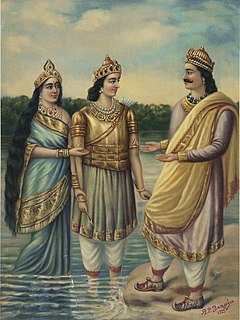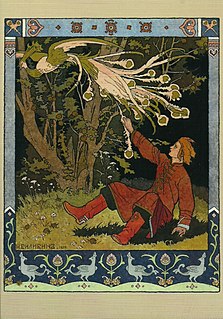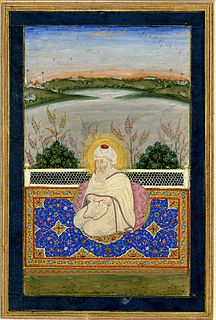
Cassandra or Kassandra, also known as Alexandra, was a daughter of King Priam and of Queen Hecuba of Troy in Greek mythology.

A pilgrimage is a journey or search of moral or spiritual significance. Typically, it is a journey to a shrine or other location of importance to a person's beliefs and faith, although sometimes it can be a metaphorical journey into someone's own beliefs.

Philip II, known as Philip Augustus, was King of France from 1180 to 1223, the seventh from the House of Capet. His predecessors had been known as kings of the Franks, but from 1190 onward, Philip became the first French monarch to style himself "King of France". The son of King Louis VII and his third wife, Adela of Champagne, he was originally nicknamed Dieudonné (God-given) because he was a first son and born late in his father's life. Philip was given the epithet "Augustus" by the chronicler Rigord for having extended the crown lands of France so remarkably.

A sanctuary, in its original meaning, is a sacred place, such as a shrine. By the use of such places as a haven, by extension the term has come to be used for any place of safety. This secondary use can be categorized into human sanctuary, a safe place for humans, such as a political sanctuary; and non-human sanctuary, such as an animal or plant sanctuary.

The Lyonesse Trilogy is a group of three fantasy novels by Jack Vance, set in the European Dark Ages, in the mythical Elder Isles west of France and southwest of Britain, a generation or two before the birth of King Arthur. An Atlantis theme haunts the story, as do numerous references to Arthurian mythology.

In the epic Mahabharata, Bhishma was well known for his pledge of Celibacy. He was the eighth son of Kuru King Shantanu and the goddess Ganga. Bhishma was blessed with wish-long life and was related to both the Pandava and the Kaurava. He was an unparalleled archer and warrior of his time. He also handed down the Vishnu Sahasranama to Yudhishtira when he was on his death bed in the battle of Kurukshetra.

Saṅghamittā was the eldest daughter of Emperor Ashoka and his first wife, Devi. Together with her brother Mahinda, she entered an order of Buddhist monks. The two siblings later went to Sri Lanka to spread the teachings of Buddha at the request of King Devanampiya Tissa who was a contemporary of Ashoka. Ashoka was initially reluctant to send his daughter on an overseas mission. However, because of the insistence of Sangamitra herself, he finally agreed. She was sent to Sri Lanka together with several other nuns to start the nun-lineage of Bhikkhunis at the request of King Tissa to ordain queen Anulā and other women of Tissa's court at Anuradhapura who desired to be ordained as nuns after Mahindra converted them to Buddhism.

In Russian folklore and fairytales the Firebird is a magical glowing bird from a faraway land, which is both a blessing and a bringer of doom to its captor. Some believe it can see the future. The Firebird has its origins in the Slavic mythology.

Lalitaditya alias Muktapida was the most powerful ruler of the Karkota dynasty of Kashmir region in the Indian subcontinent.

Baba Ramdev (or Ramdevji, or Ramdeo Pir, Ramsha Pir) is a Hindu folk deity of Rajasthan, India. He was a fourteenth-century ruler, said to have miraculous powers, who devoted his life to the upliftment of the downtrodden and poor people of society. He is worshiped today by many social groups of India as Ishta-deva.

Marianne Cope, also known as Saint Marianne of Molokaʻi, was a German-born American religious sister who was a member of the Sisters of St Francis of Syracuse, New York, and administrator of its St. Joseph's Hospital in the city. Known also for her charitable works, in 1883 she relocated with six other sisters to Hawaiʻi to care for persons suffering Hansen's Disease on the island of Molokaʻi and aid in developing the medical infrastructure in Hawaiʻi. Despite direct contact with the patients over many years, Cope did not contract the disease.

The Siege of Jerusalem was a siege on the city of Jerusalem that lasted from September 20 to October 2, 1187, when Balian of Ibelin surrendered the city to Saladin. Though Jerusalem fell, it was not the end of the Kingdom of Jerusalem, as the capital shifted first to Tyre and later to Acre after the Third Crusade. Latin Christians responded in 1189 by launching the Third Crusade led by Richard the Lionheart, Philip Augustus, and Frederick Barbarossa separately.

Prince Vijaya was a legendary king of Sri Lanka, mentioned in the Pali chronicles, including Mahavamsa. According to these chronicles, he is the first recorded King of Sri Lanka. His reign is traditionally dated to 543–505 BCE. According to the legends, he and several hundred of his followers came to Lanka after being expelled from an Indian kingdom. In Lanka, they displaced the island's original inhabitants (Yakkhas), established a kingdom and became ancestors of the modern Sinhalese people.

Maa Tarini is one of the embodiments of Shakti and is one of the chief presiding Goddesses in Odia culture. Her chief shrine is in Ghatgaon, Keonjhar District, Odisha.

Sultanpur Lodhi is a city and a Municipal Council in Kapurthala district in the Indian state of Punjab. The town is named after its founder, Sultan Khan Lodhi, who was a general of Mahmud of Ghazni in 1103 AD, which has been also mentioned in Ain-e-Akbari. Sultanpur Lodhi is located on the south bank of a seasonal rivulet called Kali Bein, which runs 6 miles (9.7 km) north of the intersection of Beas and Sutlej Rivers, two of the Five Rivers of Punjab. The word Punj - ab, literally means five river - land.
Kyneburga, Kyneswide and Tibba were female members of the Mercian royal family in 7th century England who were venerated as saints.

Naugaja Peer was a saint whose height was 9 "gaj" which in Indian metric units equals 8 meters and 36 inches or 27 feet. His name was Syed Ibrahim Badshah, who is believed to ensure safe journeys and completion of all works in time.
Gurudwara Gurusar Sahib' - a shrine which commemorates visit of Guru Hargobind Sahib and Guru Gobind Singh. Gurudwara Gurusar Sahib is located in village Lal Kalan (Ldh), Lal Kalan is a village near Neelon Bridge, Sirhind Canal ; on Chandigarh-Ludhiana Road.Gurudwara Sahib, inside a walled compound has an octagonal shaped room, with the sanctum in the middle. Over the sanctum on the first floor there is a low domed room built in the same style. At Gurudwara Gurusar Sahib there is Sarovar, Beri Sahib and Barota Sahib with their own importance.

In the Hindu epic Mahabharata, Amba is the eldest daughter of the king of Kashi, who considers the Kuru prince Bhishma responsible for her misfortune and her sole goal in life becomes his destruction, to fulfill which she is reborn as Shikhandi.

The Maa Tarini Temple in Ghatgaon is a famous Hindu Goddess temple dedicated to Maa Tarini.






















